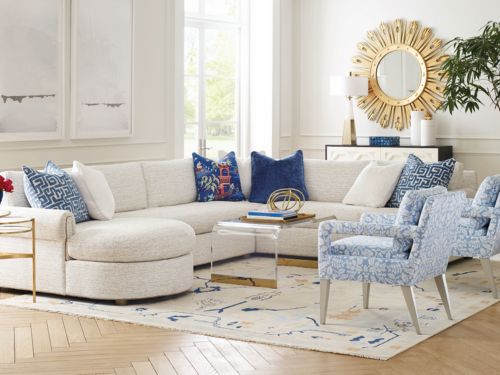Blog
Hidden Costs of Fast Furniture: The Critical Importance of Sustainability

The rise of fast furniture has significantly changed how people furnish their homes, with consumers spending an astonishing $4 billion on these pieces from 2019 to 2021. Fast furniture, defined by its mass production, affordability, and often lack of durability, has become a popular choice for many. However, underneath its appealing price tag lies hidden costs that can have serious, long-term consequences. These include concerns about the furniture's longevity, its impact on the environment, and potential health risks. Understanding these factors is important in evaluating the true cost of fast furniture and exploring more sustainable choices.
The Problem with Fast Furniture
1. Lack of Durability
On average, fast furniture lasts less than a decade before showing signs of wear or complete breakdown. For instance, the wood on a dresser might start to sag and split within a few years, while an upholstered chair could lose its shape and comfort after just a few uses. In comparison, a piece of sustainable furniture might last long enough to be used by multiple generations—also known as heirloom furniture.
2. Environmental Impact

One of the most significant environmental concerns with fast furniture is its contribution to landfills. Due to its low cost and short lifespan, it is often thrown out much sooner than high-quality, durable pieces. Fast furniture is typically made from materials that do not break down easily. These materials can leach harmful chemicals into the soil and groundwater as they break down, contaminating the environment. It also takes many years for the pieces to fully decompose.
According to the Environmental Protection Agency (EPA), Americans discard over 12 million tons of furniture annually, marking a staggering 450% increase in waste since 1960. The amount of discarded furniture contributes significantly to landfill overcrowding and environmental pollution, and adds to the cycle of waste and environmental harm.
3. Health Concerns

Fast furniture is often bound together with adhesives that contain formaldehyde and other volatile organic compounds (VOCs). Formaldehyde is known to be an irritant to the eyes, skin, and respiratory system. Long-term exposure to formaldehyde can lead to more serious health issues, including respiratory problems and an increased risk of cancer.
Additionally, fast furniture can be coated with synthetic finishes that emit VOCs. These substances can release toxic fumes into the air, contributing to poor indoor air quality and conditions like asthma and allergies.
The Appeal of Fast Furniture

Fast furniture appeals to many people because it quickly aligns with short-lived trends in home decorating, often seen online or on social media. Its affordability and style can be tempting; a ‘fast furniture’ sofa might cost a fraction of what a traditional piece does. However, this lower price often comes with a significant trade-off in quality and durability.
The Role of Circle Furniture

At Circle Furniture, our core belief is that furniture should be both beautiful and environmentally friendly. That’s why we focus on offering high-quality, sustainable products. We carefully select our brand partners to make sure they share our commitment to sustainability.
We want you to feel good about your purchase, knowing that it supports responsible practices and helps protect the planet. At Circle Furniture, we’re dedicated to providing you with options that are as kind to the environment as they are to your home.
Helping the Cause
When purchasing furniture, it’s important to balance style and affordability with sustainability. Consider investing in pieces that are not only stylish and affordable but also durable and made from sustainable materials. Sustainable furniture is free from harmful chemicals, built to last, and has been produced with environmentally friendly practices. By making thoughtful choices, you can enjoy a beautiful home full of long-lasting pieces that doesn’t come at the expense of the planet or your health.
Written by Madeline Leung, Marketing Associate
Author: Guest Author

